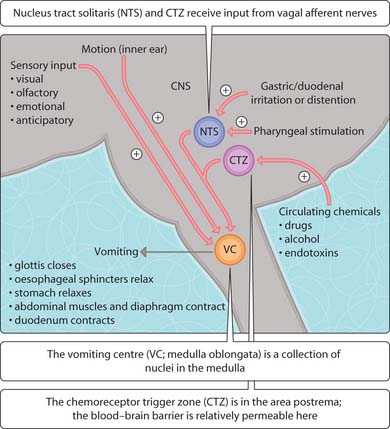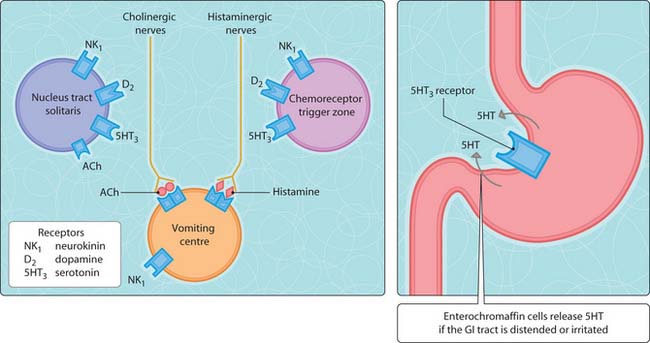20 Nausea and emesis
Nausea is a subjective unpleasant wave-like sensation experienced in the back of the throat and may or may not culminate in emesis, the forceful expulsion of contents of the gastrointestinal tract through the oral cavity. These physiological processes are a defensive mechanism to remove or avoid ingestion of harmful substances. Nausea and vomiting can occur as a result of gastrointestinal disturbances, pregnancy, motion sickness and intracranial pathology. They can also occur in postoperative nausea and vomiting (PONV), administration of drugs, cancer therapy (drug and radiation), antibiotics, analgesics (narcotics, NSAIDs) and following sensory stimuli (visual, auditory, olfactory, psychogenic). The control of emesis arises from the stimulation of two anatomically and functionally separate areas of the brainstem, the vomiting centre (VC) and a chemoreceptor trigger zone (CTZ) (Fig. 3.20.1). The CTZ responds to a variety of hormones, toxins and drugs within the circulation and to a rise in intracranial pressure. This region also receives afferent projections from mechanoreceptors and chemoreceptors from the gastrointestinal tract and other organs and peripheral pain receptors (Fig. 3.20.2). The VC is a collection of second-order neurons that receives input from the CTZ, vagal afferents and higher brain function (e.g. fear, anxiety). The VC is responsible for emesis involved in olfactory, emotional/anticipatory, hormonal/stress and pain-inducing vomiting.
< div class='tao-gold-member'>







